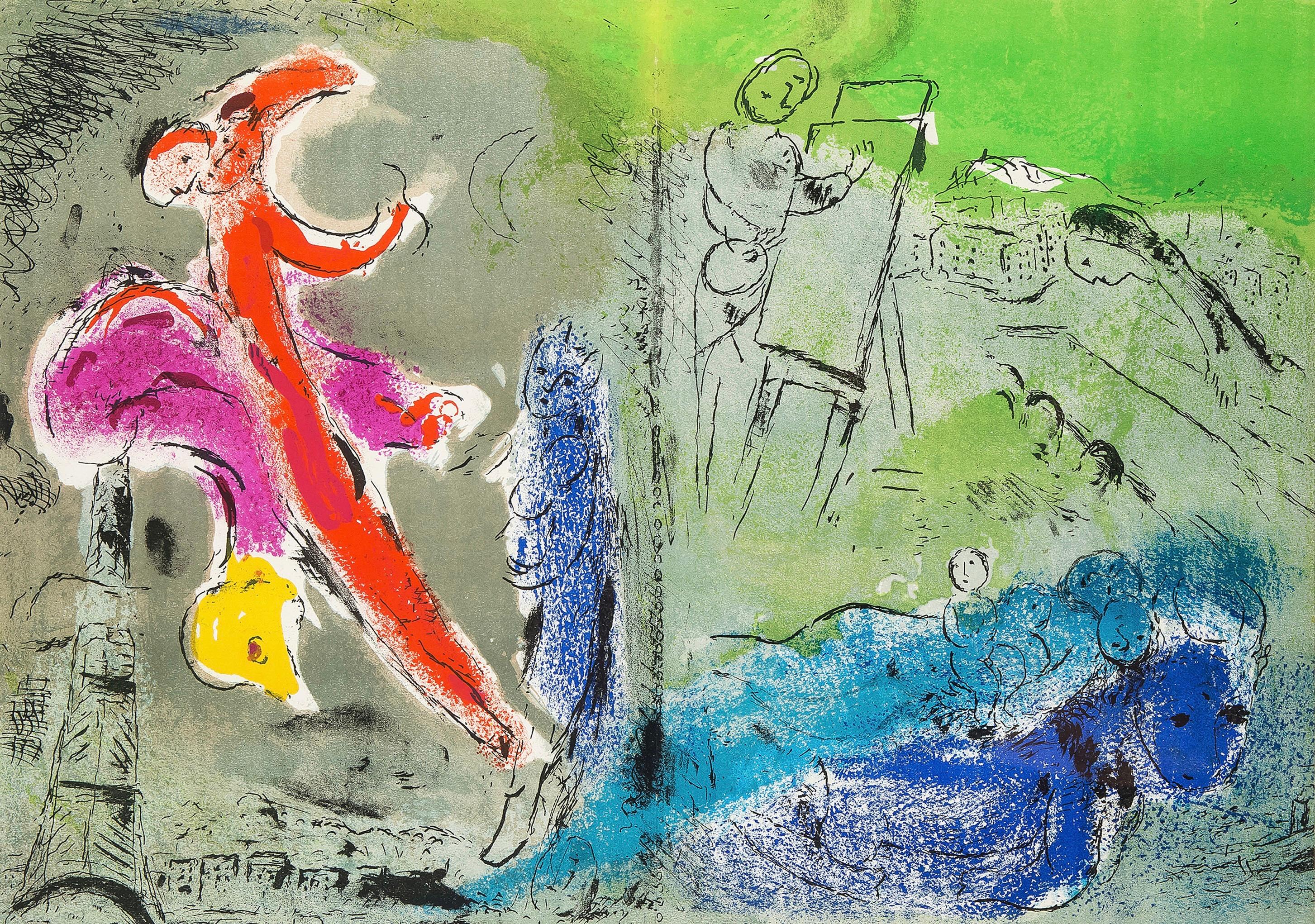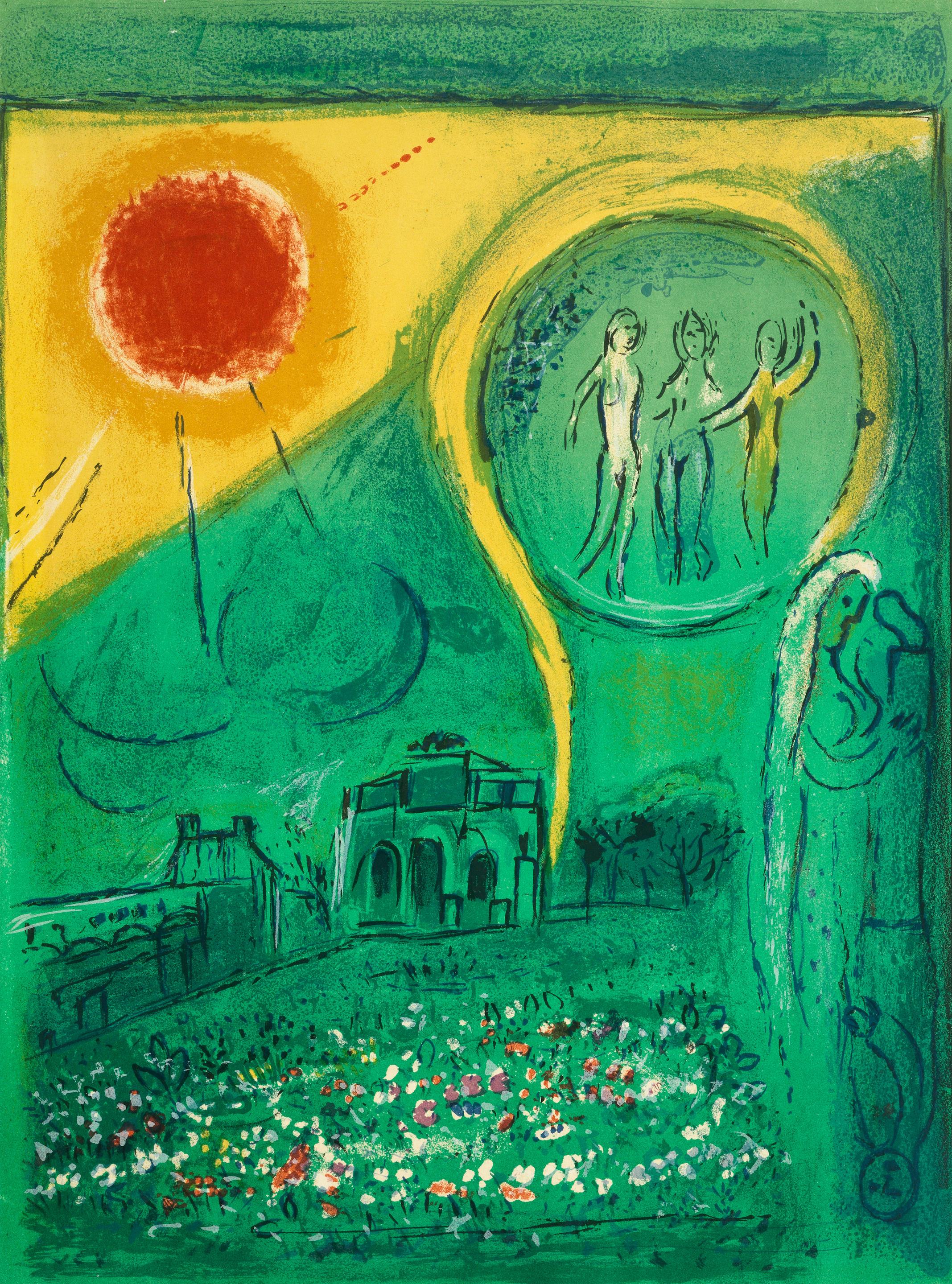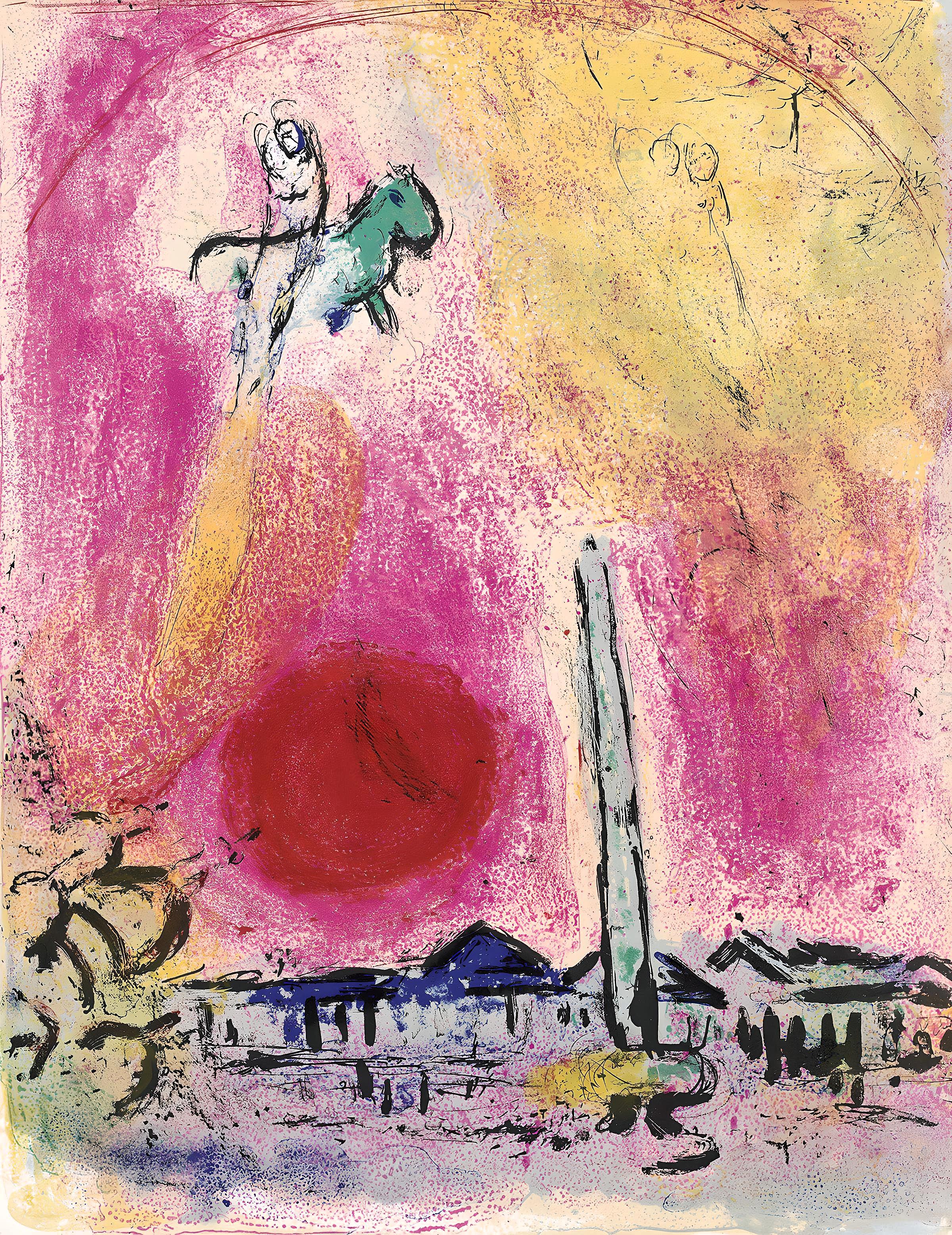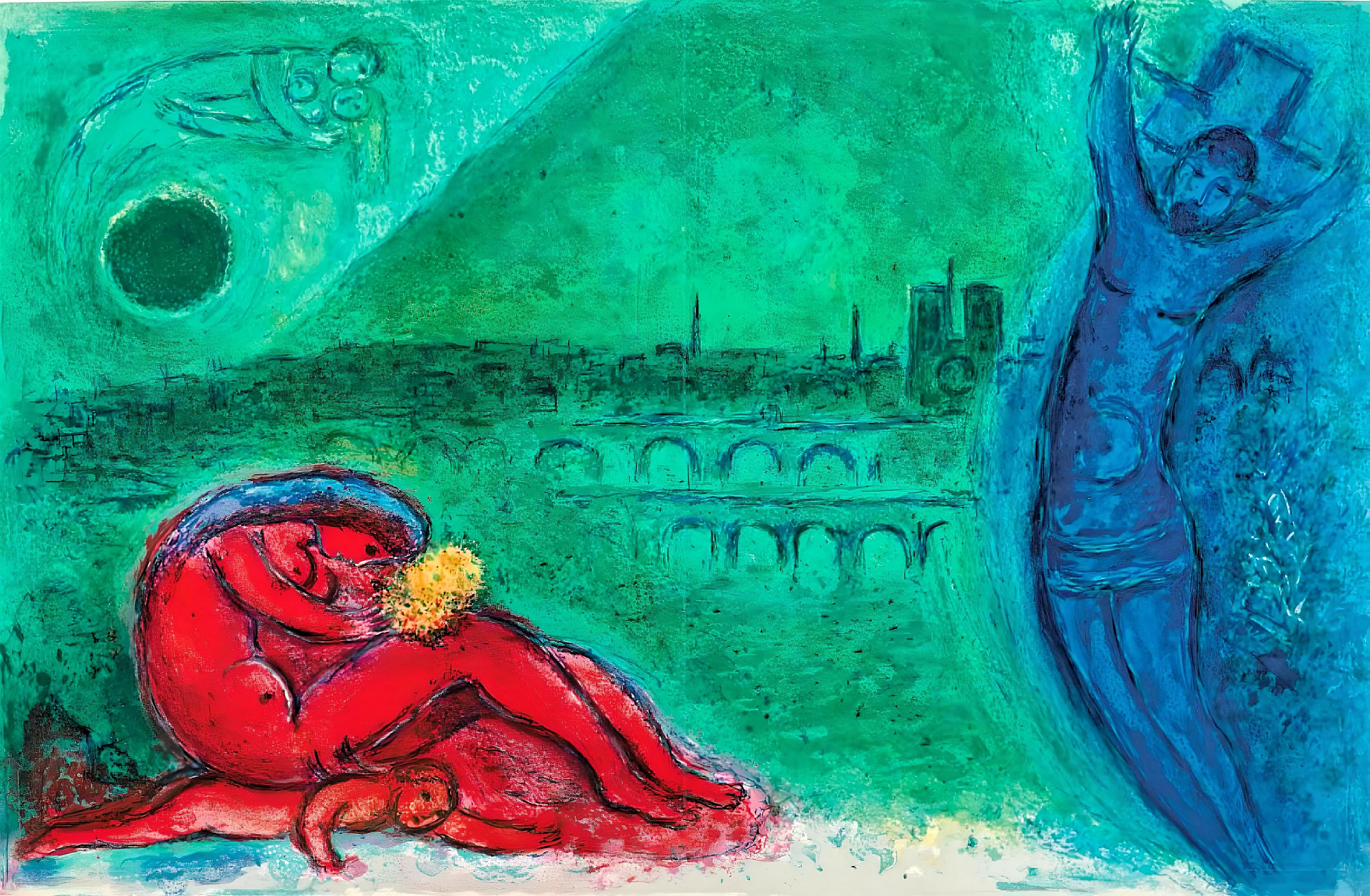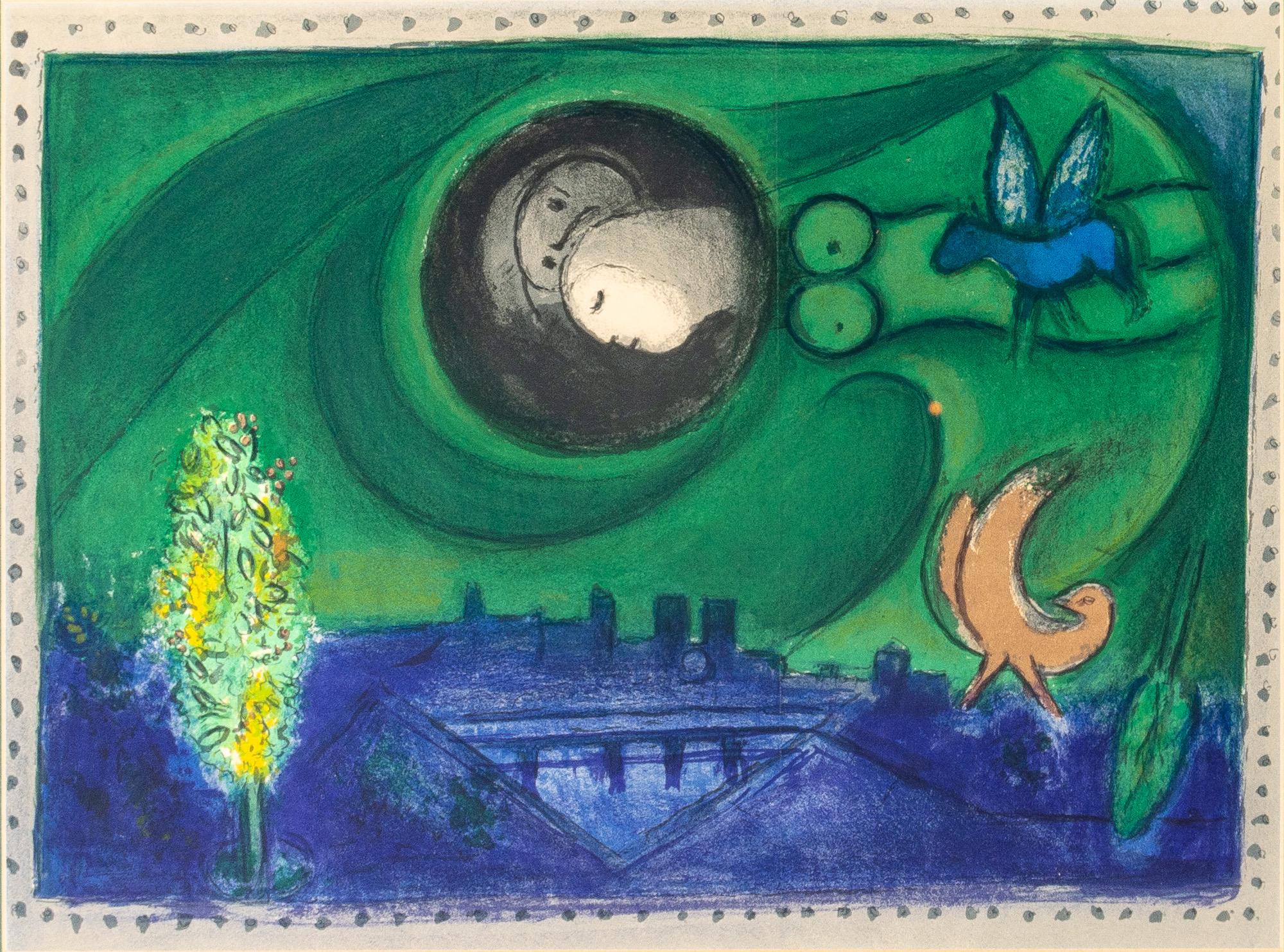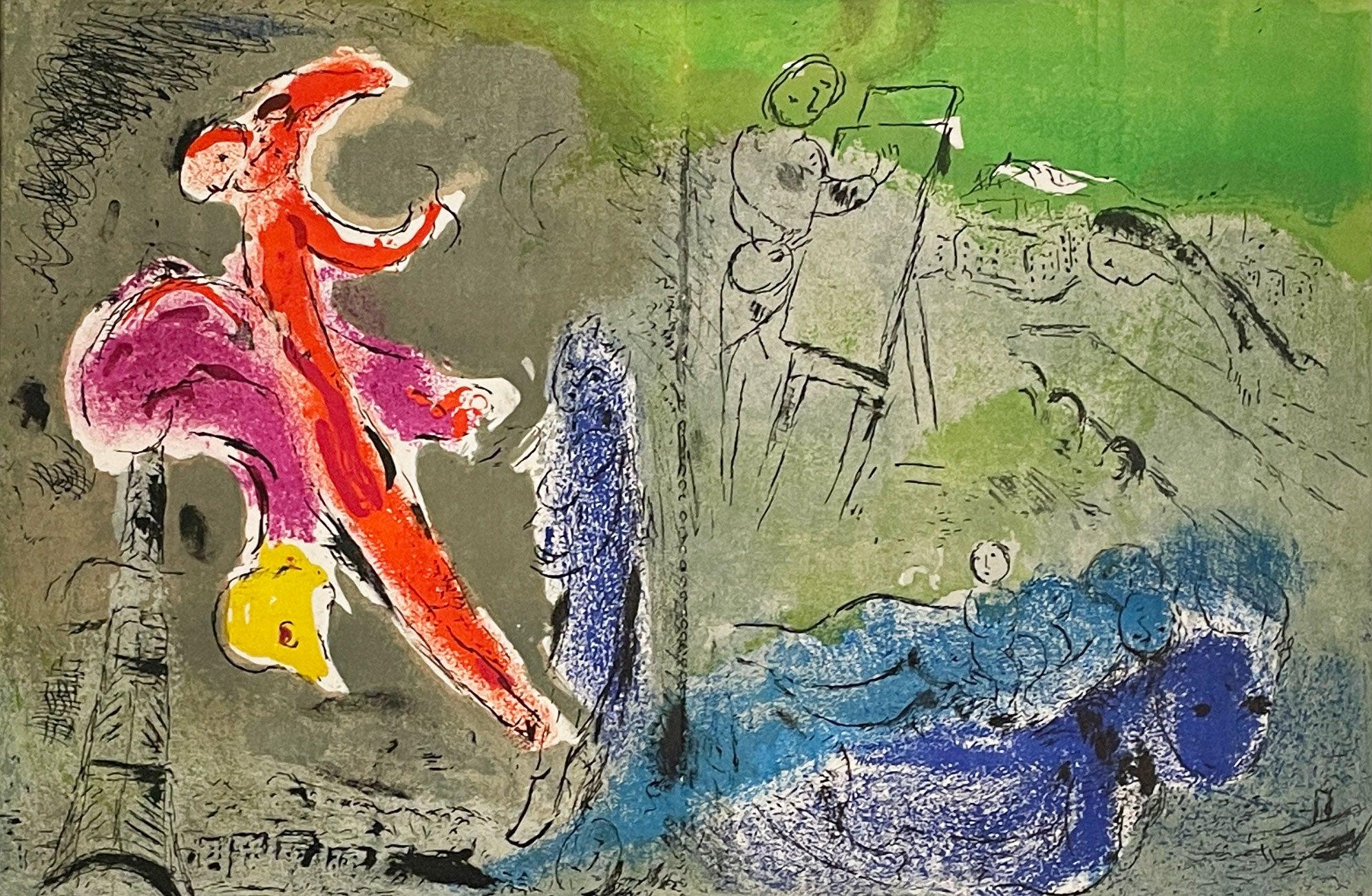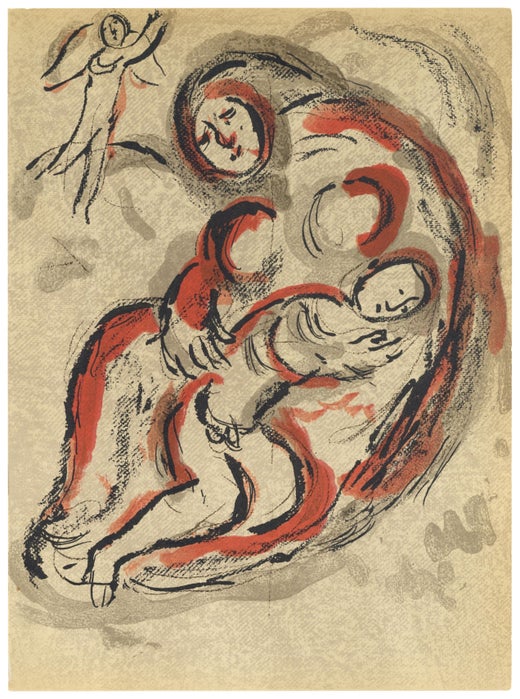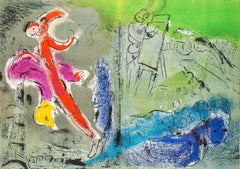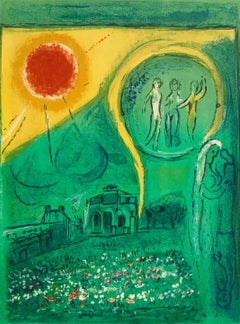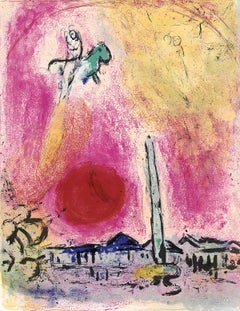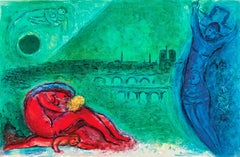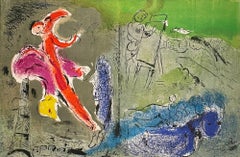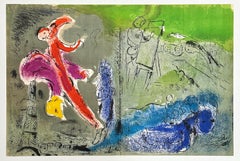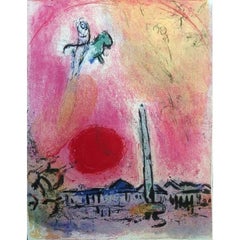Litografia su carta vélin des Papeteries du Marais. Formato carta: 14 x 10,25 pollici. Iscrizione: Non firmato e non numerato, come emesso. Riferimenti al catalogo ragionato: Cain, Julien e Fernand Mourlot. Chagall Lithographe. André Sauret, Éditeur, 1960, illustrazione 83. Cramer, Patrick e Meyer. Marc Chagall: Catalogo ragionato dei libri illustrati. P. Cramer ed., 1995, illustrazione 23. Note: Dall'album Verve: Revue Artistique et Littéraire, Vol. VII, N° 27-28, 1953. Pubblicato da Éditions de la revue Verve, Parigi, sotto la direzione di Tériade, éditeur, Parigi; stampato da Mourlot Frères, Parigi, 15 gennaio 1953, in un'edizione di MM. Estratto dall'album (tradotto dal francese), Questo numero doppio di Verve è stato completato per la stampa il 15 gennaio 1953 da Draeger per la tipografia e la rotocalco e da Mourlot per la litografia. Note aggiuntive: Estratto da Poppy Sfakianaki, 'La revue Verve (1937-60): Un tremplin pour la carrière de Tériade dans les éditions d'art', Journal of European Periodical Studies, 4.2 (Winter 2019), 70-89, Nel 1937, Tériade (1897-1983) incontrò David David (1892-1952), l'editore americano della rivista Esquire, che gli offrì l'opportunità di collaborare alla creazione della "rivista più bella del mondo". Smart riconobbe in Tériade non solo la sua abilità come editore e la sua conoscenza della storia dell'arte, ma anche la sua rete professionale e il nome che si era fatto nel mondo dell'arte parigino, tutti vantaggi cruciali per un'azienda editoriale. Avendo la convinzione commerciale che la bellezza "vende", Smart intendeva rivolgersi al pubblico americano, attratto dall'arte francese, compresa quella moderna, e dal mito della vita artistica di Parigi. Da parte sua, Tériade vide la proposta di collaborazione come un'opportunità per entrare nel mercato americano, un potente alleato dell'arte moderna in Francia. Le Éditions de la Revue Verve furono fondate nel novembre del 1937, finanziate in gran parte da Smart e dirette da Tériade. Verve: Revue Artistique et Littéraire era una lussuosa e ambiziosa pubblicazione d'arte, pubblicata non solo in francese, ma anche in inglese nei primi anni, e distribuita in Europa e negli Stati Uniti. La sua configurazione ricorda quella delle riviste d'arte francesi Cahiers d'art, Minotaure e Arts et métiers graphiques, nonché quella della rivista d'arte americana Coronet. Tuttavia, Verve era superiore alla concorrenza grazie alla sua ricca iconografia e all'elevata qualità di stampa. Il suo prezzo variava tra i 60 e i 150 franchi (per i numeri doppi) prima della guerra e tra i 120 e i 350 franchi durante la guerra. Dato il suo prezzo elevato, la rivista si rivolgeva principalmente a mercanti d'arte, collezionisti, bibliofili e ricchi amanti dell'arte. La squisita estetica della rivista era dovuta al suo caporedattore, Tériade, che cercava di sviluppare una piattaforma di dialogo tra immagine e testo, arti visive e letteratura. Il fattore dominante di ogni numero rimane l'iconografia, composta da riproduzioni di opere di artisti moderni che Tériade ammirava e di "maestri", principalmente della tradizione francese, accanto a foto e miniature di manoscritti medievali. Tériade ha indubbiamente realizzato con la sua rivista un'idea espressa nel 1934, secondo la quale i libri servivano come un "museo ideale" o una mostra in cui sono raccolti tutti i capolavori artistici, che Malraux sviluppò in seguito in Le Musée imaginaire (Ginevra: Skira, 1947), alcune parti del quale appariranno in Verve. Durante la Seconda Guerra Mondiale la periodicità della rivista cambiò, diventando irregolare, e la natura degli argomenti trattati fu meno varia. Così, i numeri pubblicati durante la guerra (così come nel 1945 e nel 1946) furono dedicati esclusivamente alla riproduzione di miniature medievali. Infine, i numeri speciali del dopoguerra presentano ciascuno la produzione recente di un pittore d'arte moderna. Solo i numeri 8 (1940) e 27-28 (1952) rappresentano un'eccezione con un sommario più vario. L'accoglienza di Verve è stata positiva, come dimostrano diversi articoli di stampa elogiativi durante tutta la sua durata. Il successo della rivista, la passione di Tériade per l'arte moderna e i manoscritti medievali, la sua ammirazione per le pubblicazioni di Ambroise Vollard e Albert Skira e la sua conoscenza del mondo dei bibliofili, lo portarono presto ad amplificare la sua attività editoriale. Nel 1943, nonostante le difficoltà pratiche imposte dalla guerra, viene pubblicato il suo primo libro d'artista, scritto e illustrato da Georges Rouault. Fino al 1975, Tériade pubblicò le Éditions de la Revue Verve, nove libri di artisti moderni, come Henri Matisse, Pablo Picasso, Marc Chagall, Joan Miró, interamente composti (testo e immagini) dagli artisti; diciassette libri illustrati da artisti moderni riconosciuti; un album di litografie di Fernand Léger su Parigi; due album fotografici di Henri Cartier-Bresson; due monografie sugli artisti André Beaudin e Francisco Borès; una lussuosa serie di riproduzioni di miniature medievali e una serie di portfolio sulla grande architettura francese. In definitiva, lo studio comparativo della rivista e delle edizioni di Verve: Revue Artistique et Littéraire illustra l'importanza della dinamica relazionale tacita che deriva dai rapporti di collaborazione e dallo scambio di capitale simbolico basato su percezioni e interessi comuni, nonché sui sentimenti di amicizia e apprezzamento reciproco degli attori del mondo dell'arte che condividono una cultura visiva e bibliofila e che quindi contribuiscono al successo della rivista e della casa editrice.
MARC CHAGALL (1897-1985) è stato un artista russo-francese. Un modernista precoce, fu associato all'École de Paris e a diversi stili artistici importanti e creò opere in una vasta gamma di formati artistici, tra cui pittura, disegni, illustrazioni di libri, vetrate, scenografie, ceramiche, arazzi e stampe d'arte. Chagall nacque da una famiglia ebrea nei pressi di Vitebsk, oggi in Bielorussia, ma all'epoca nella Pale of Settlement dell'Impero Russo. Prima della Prima Guerra Mondiale, viaggiò tra San Pietroburgo, Parigi e Berlino. In quel periodo, creò la sua miscela e il suo stile di arte moderna, basandosi sulle sue idee sul folklore dell'Europa orientale ed ebraico. Trascorse gli anni della guerra nella sua nativa Bielorussia, diventando uno degli artisti più illustri del paese e un membro dell'avanguardia modernista, fondando il Vitebsk Arts College. In seguito lavorò a Mosca e nelle sue vicinanze in condizioni difficili durante i tempi duri della Russia in seguito alla Rivoluzione bolscevica, prima di partire nuovamente per Parigi nel 1923. Durante la Seconda Guerra Mondiale fuggì dalla Francia occupata per raggiungere gli Stati Uniti, dove visse a New York per sette anni prima di tornare in Francia nel 1948. Il critico d'arte Robert Hughes ha definito Chagall "l'artista ebreo per eccellenza del XX secolo". Secondo lo storico dell'arte Michael J. Lewis, Chagall era considerato "l'ultimo sopravvissuto della prima generazione di modernisti europei". Per decenni, "è stato anche rispettato come il più importante artista ebreo del mondo". Utilizzando il mezzo del vetro colorato, ha prodotto vetrate per le cattedrali di Reims e Metz e per il Fraumünster di Zurigo, vetrate per l'ONU e l'Art Institute di Chicago e le Jerusalem Windows in Israel. Realizzò anche dipinti di grandi dimensioni, tra cui parte del soffitto dell'Opéra di Parigi. Ha vissuto il "periodo d'oro" del modernismo a Parigi, dove "ha sintetizzato le forme d'arte del cubismo, del simbolismo e del fauvismo, e l'influenza del fauvismo ha dato origine al surrealismo". Tuttavia, in tutte queste fasi del suo stile "rimase un artista ebreo, il cui lavoro era una lunga e sognante fantasticheria sulla vita nel suo villaggio natale di Vitebsk". "Quando Matisse morirà", osservò Pablo Picasso negli anni '50, "Chagall sarà l'unico pittore rimasto a capire cosa sia veramente il colore".
